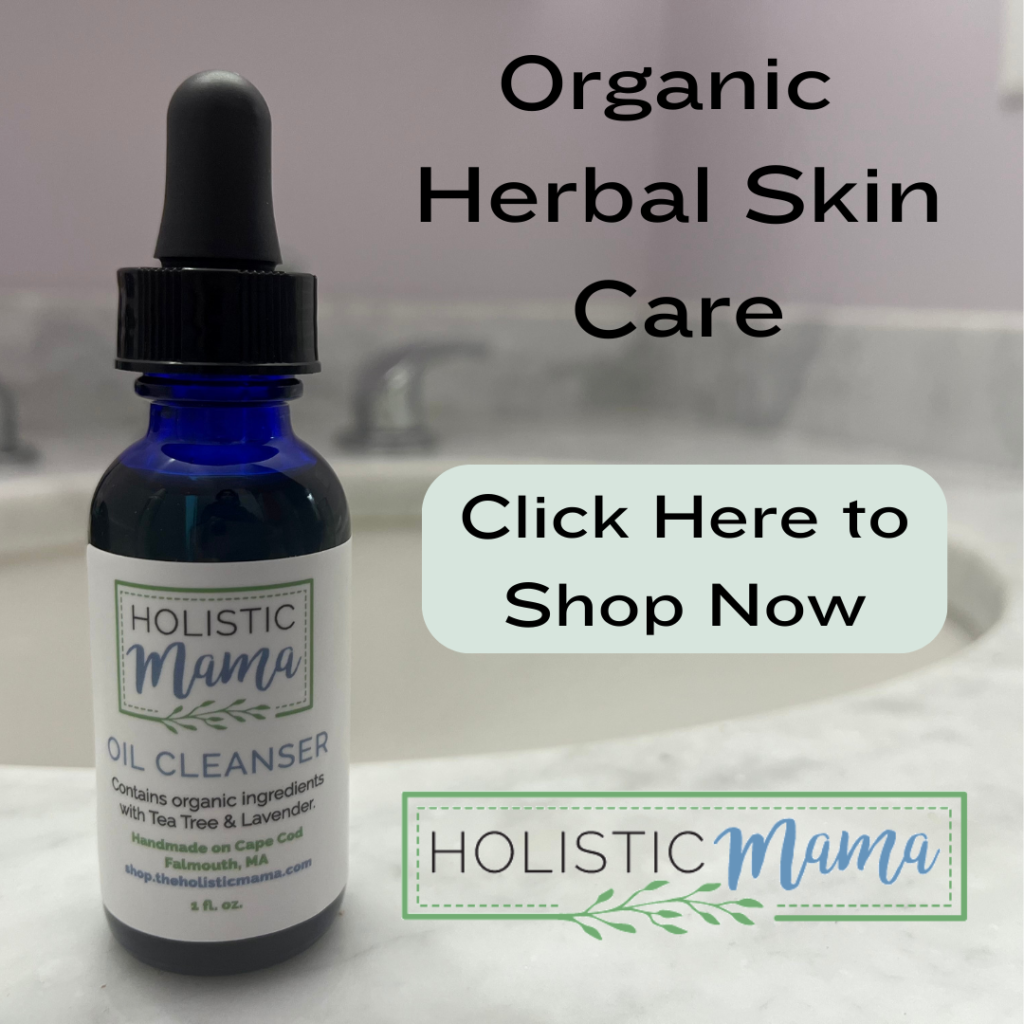-
How to Make Coconut Milk Yogurt
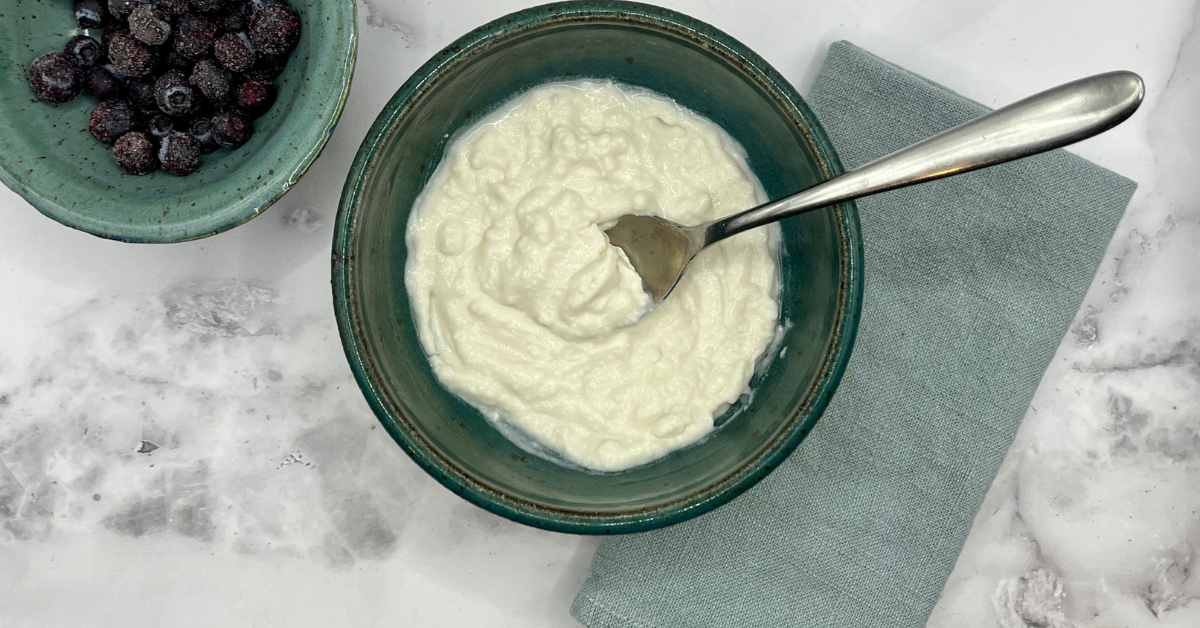
This simple coconut milk yogurt recipe will prove it's easy to make homemade dairy-free yogurt. If you are trying to limit dairy products, or prefer not to use cow's milk, coconut milk is a good substitute. It works well in yogurt because It has a thicker consistency and higher fat content. This makes it a better choice for yogurt than other non-dairy milks.
Why Make Homemade Coconut Milk Yogurt?
The problem with store bought coconut milk is the high sugar content and additives. The high sugar content cancels out the benefits of eating a cultured food. There are also gums and thickeners added to commercial yogurts. Some of the additives are unhealthy ad take away from the potential benefits.
This recipe doesn't take long to to mix together and set up the yogurt to culture. However, plan to make it a day ahead of time to allow for 18-24 hours of culturing time. This finished cultured coconut milk yogurt recipe is similar to the flavor of plain yogurt but not quite as sour. You can choose to flavor it with vanilla extract or fruit. Blend the plain yogurt it in a food processor or high powered blender like a Vitamix with your flavoring of choice. In my opinion, it is tasty on its own and my children eat it as is with granola and berries.
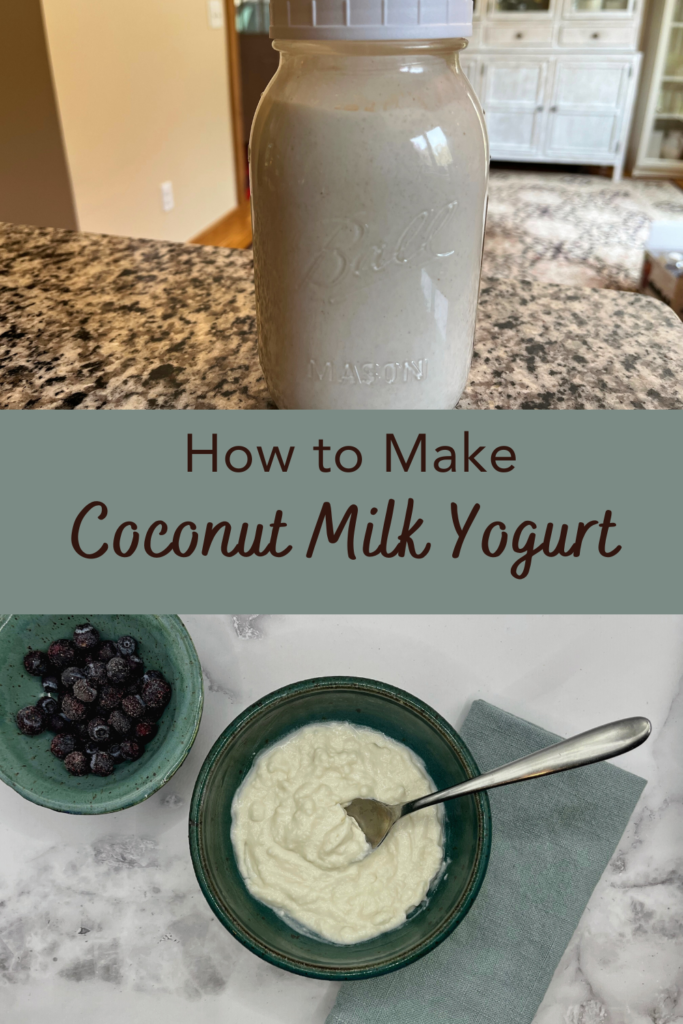
Coconut Milk Yogurt
Ingredients
- 2 14oz. Can Organic Coconut milk
- 1 Packet Yogurt Culture Starter Packet or 2 good quality Probiotic capsules
- 2 tsp grass-fed Gelatin
- 2 tbsp Sweetener – Coconut Sugar, Date Syrup, Honey, or Maple Syrup
Instructions
- Dissolve gelatin with 1/4 cup of milk and set aside.
- Heat the remaining coconut milk over low heat until hot (not boiling) to make it smooth.
- Remove from heat and whisk in the gelatin mixture and sweetener.Let it cool until it’s about 90 degrees.
- Whisk in the starter culture and/or probiotic capsule into the coconut milk.
- Pour into a clean 2 quart size glass jar.Cover with a lid and keep the coconut milk at 100-115 degrees for 18-24 hours. You can use a dehydrator, oven, or a yogurt maker. If you use your oven, you can use the bread proof setting (if you have it) or just keep the light on and wrap with a towel.
- When the coconut milk yogurt is finished culturing it will taste/smell a bit sour and will be slightly thicker and may be separated (this is ok just shake it up, it will thicken more once refrigerated).
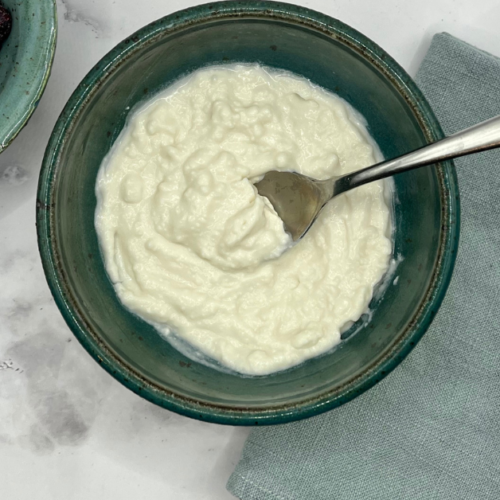
Coconut Milk Yogurt Recipe
Ingredients
- 2 14oz. Can Organic Coconut milk
- 1 Packet Yogurt Culture Starter Packet or 2 good quality Probiotic capsules
- 2 1/4 tsp grass-fed Gelatin
- 2 tbsp Sweetener – Coconut Sugar, Date Syrup, Honey, or Maple Syrup
Instructions
- Dissolve gelatin with 1/4 cup of milk and set aside.
- Heat the remaining coconut milk over low heat until hot (not boiling) to make it smooth.
- Remove from heat and whisk in the gelatin mixture and sweetener.Let it cool until it’s about 90 degrees.
- Whisk in the starter culture and/or probiotic capsule into the coconut milk.
- Pour into a clean 2 quart size glass jar.Cover with a lid and keep the coconut milk at 100-115 degrees for 18-24 hours. You can use a dehydrator, oven, or a yogurt maker. If you use your oven, you can use the bread proof setting (if you have it) or just keep the light on and wrap with a towel.
- When the coconut milk yogurt is finished culturing it will taste/smell a bit sour and will be slightly thicker and may be separated (this is ok just shake it up, it will thicken more once refrigerated).
Next Batch of Coconut Milk Yogurt
Lastly, keep 1/4 cup of your coconut milk yogurt to use to make your next batch of yogurt. Follow the same process for your next batch using 1/4 cup of reserved yogurt. With your reserved yogurt there is no need for a probiotic or starter culture.

Thank you for reading this post, don't forget to subscribe to stay in the loop. If you are looking for some of the healthy tools and resources mentioned in my articles, take a look at my healthy shopping guide.
Some of our links are affiliate links, which means if you click and buy, I earn a small commission. The price is the same for you, though. Thank you!
You might also like these posts…
-
Natural Oils That Contain SPF
Category: Natural Skin Care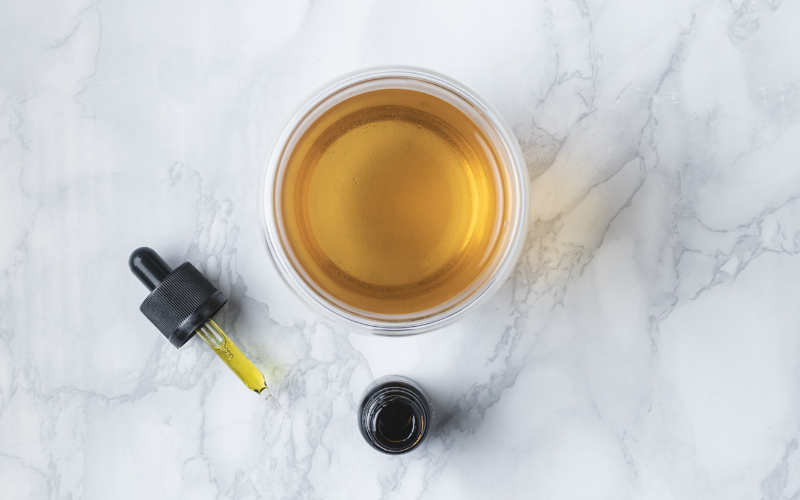
If you are interested in natural skin care you may wonder if there are any natural SPF oils. Sunscreen safety is a big topic. A quick search and some reading on the topic will show that many sunscreen products are not healthy and might even cause more damage then you were hoping to prevent.
The Environmental Working Group is the best place to get reliable information on this topic. Their yearly sunscreen guide is best resource to find out about the best and worst sunscreen products on the market. After learning about all the dangers of sunscreen products, many people wonder if they can get the same or better sun protection just by using natural spf oils and avoiding sunscreen products all together.
Homemade sunscreen recipes like this one are gaining popularity because people want better alternatives. However, homemade sunscreen can't offer you an SPF number that we are used to seeing on a sunscreen product. While homemade sunscreens do work, it's hard to put an SPF of them without doing some testing. The best way to know if homemade will work for you is to experiment very carefully to see what works for your skin.
What is SPF anyway?
SPF measures the sunscreen protection from UVB rays (which is what causes sunburn). If you would usually burn after 10 minutes in the sun, an SPF 15 sunscreen would allow you to stay in the sun for approximately 150 minutes without burning. That is 15 times longer then you'd be able to without it. In order for a product to be able to make an SPF claim, it needs to go through extensive FDA testing to prove this sun protection factor. One of the reasons for that is that different combinations of oils and ingredients will give different SPF ratings. It's not as easy as just adding together the natural SPF oils ratings of each ingredient.
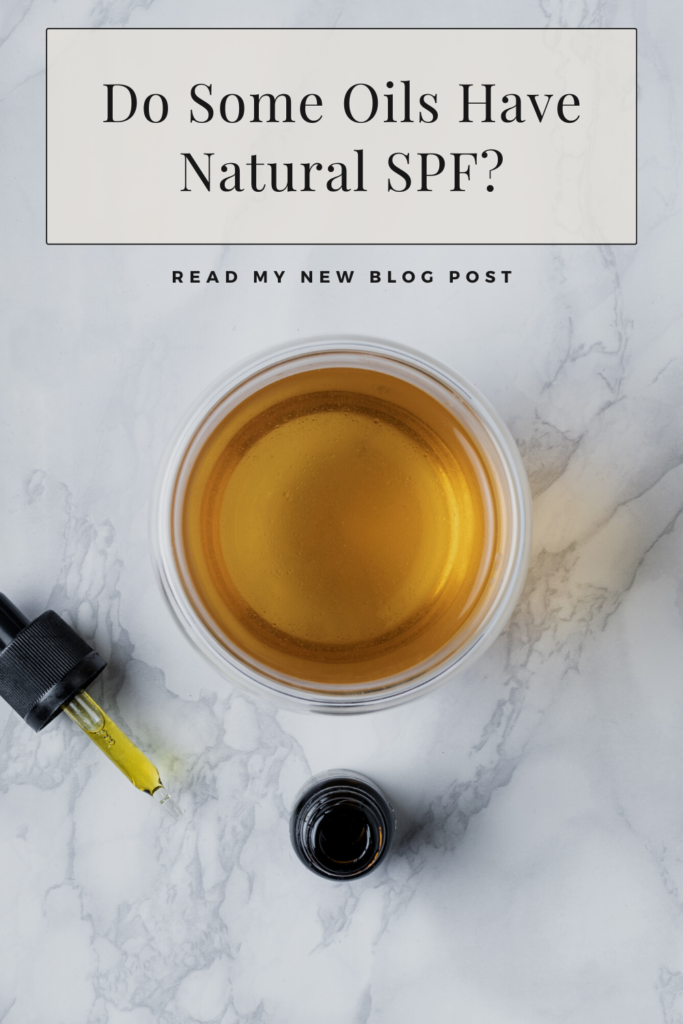
Natural SPF Oils
Are there oils with naturally occurring spf? The truth is, some oils do have natural SPF and can help protect us from the sun. The only problem is we don't really know exactly how much protection you are getting when ingredients are combined. There was a helpful study done on the sun protection factor of some individual natural oils. The results were quite interesting. A number of oils in the study were rated SPF 5 or more, those oils are:
- Olive Oil – SPF 7.5
- Coconut Oil – SPF 7.1
- Peppermint Oil – SPF 6.6
- Tulsi Oil – SPF 6.5
- Lemongrass oil – SPF 6.2
- Lavender oil – SPF 5.6
- Castor Oil – SPF 5.6
More findings in additional studies on SPF:
- A study in 2021 found that tamanu oil had an SPF of 11.9.
- This study on calendula showed that calendula oil had an SPF rating of approximately 14 which is pretty high for a natural oil!
Most of the SPF ratings of the oils in these studies seem quite low compared to some of the sunscreen products on the market. There are SPF claims of 50 or higher on some conventional products. Keep in mind that experts say anything over SPF 30 is not even beneficial. Using these natural oils is certainly much better then using nothing at all but the addition of zinc oxide is really helpful to make a big jump up in sun protection.
Zinc Oxide
Aside from natural oils SPF, zinc oxide is the healthiest way to get longer and stronger protection from the sun. The biggest problem with zinc oxide is that, because of it's pasty white nature, sunscreen makers are using smaller and smaller particles of zinc (called nano-particles) in their products. The particles have gotten so small that they can even penetrate the skin or get into the lungs (in the case of sprays or powders) and that's where the health concerns really lie. Use a non nano-particle zinc in your own mixtures to make sure it is safe (or just look for products made without nano-particles)

Thank you for reading this post, don't forget to subscribe to stay in the loop. If you are looking for some of the healthy tools and resources mentioned in my articles, take a look at my healthy shopping guide.
Some of our links are affiliate links, which means if you click and buy, I earn a small commission. The price is the same for you, though. Thank you!
You might also like these posts…
-
Best Non-Candy Easter Gifts for a Healthy Basket
Category: Gift Guides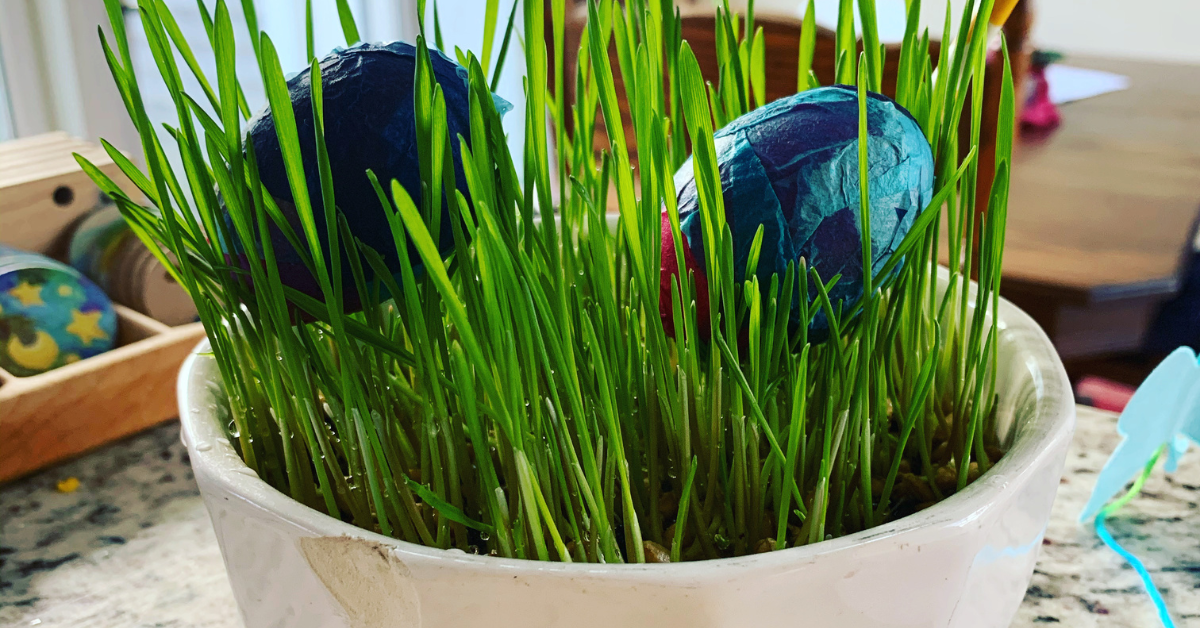
The best non-candy Easter gifts for a healthy basket can be so much fun. It’s a chance to get creative and give your children more than junk food. There are a lot of things you can put in an Easter basket. The problem is that so many of the non-candy options are also junk – plastic that will end up in a landfill. They are toys that will break easily or never be played with again and tossed.
How about the idea of a non-candy gift on a holiday that is also useful? Many items you use regularly have a fancier or more fun version. When my kids were young, they loved getting fun toothbrushes in their baskets. I typically would buy boring toothbrushes but on the holidays they would get a fun character toothbrush that they didn’t normally get. There are also fun gift items that are not necessarily useful but they are still made of natural materials (like these fun break your own geodes).
What can I give for Easter instead of candy?
Every year I try to come up with new and fun ideas for Easter baskets that are age appropriate. The things a toddler would love are much different than a teenager. Easter baskets are still a lot of fun when they are low in sugar and full of useful and fun items. Although some of these items do crossover into other age groups! Here is a good list to get you started on brainstorming ideas for your children (or young adults).
No Candy Easter Basket for Toddlers
- Bubbles.
- Chalk
- Binoculars
- Insect Collection Kit.
- Beach Toys
- Fun toothbrushes
- An Easter t-shirt
- Hats
- Fun Easter socks
- Bath toys
- Wood Animal figurines
- Play dough (there are a lot of recipes, you can make your own)
- Easter picture book
- Beeswax Crayons
- An Apron for crafts or cooking
- An Easter outfit
Non Candy Easter Basket Ideas for Girls & Boys Age 5-10
- Small lego sets
- Jump rope
- Puzzles
- Card games
- Puzzle books
- Coloring books
- Paint by number
- Bunny soap
- Lip Balm
- Bath bombs
- Paint & Plant Flower Kit
- Seeds for planting a garden
- A potted plant
- Paint by sticker
- Chapter books
- Melissa & Doug Water Wow! Activity Pad
- Geodes
- Markers
- Headbands or hair clips
- Jump rope
- Bathing suit
- Sunglasses
- Kids cookbook
- Supplies to make homemade cookies
Non Candy Easter Basket Ideas for Tweens & Teens
- Slipper socks
- Potted plant or cactus
- Seeds for planting a garden
- Lip Balm
- Tinted Lip Balm
- Fun Easter soap
- Morning mantra cards
- Fancy pens
- Gift card to the movies
- Nail polish
- DIY Herbal Salve kit
- Hair ties
- Flip flops or sandals
- Phone case
- Sunglasses
- LMNT Electrolyte drink powder packets
No Candy Easter Basket Ideas for Young Adults
- Gift cards
- Organic coffee
- Organic Skin care products
- Hair products
- Organic Teas
- Seeds for planting a garden
- Healthy supplements like this Perfect Collagen or Perfect Mushroom Immunity
- Honey
- Beeswax candles
- Healthy makeup
- Subscription to Thrive Market
- Homemade vanilla extract
- A nice bottle of organic olive oil or balsamic vinegar
What Can I put Inside Easter Eggs Besides Candy?
If your family has an egg hunt tradition, you can dye real eggs with homemade food dye and hide them. This avoids the need to fill plastic eggs with candy or junk. If you do use plastic Easter eggs, you can still fill them with non-candy gifts that come in handy. Here are some ideas:
- Money
- Temporary tattoos
- Stickers
- Fun band-aids
- Seeds for planting a garden
Holidays can be a time when so much junk food comes into your life. You can still have fun traditions and enjoy the day without those things. Making homemade treats that are healthier can become part of your family traditions. There are many simple and healthy recipes you can try to find the ones your family likes the most. Try these Chocolate Zucchini Muffins or this Gluten-free Irish Soda Bread.

Thank you for reading this post, don't forget to subscribe to stay in the loop. If you are looking for some of the healthy tools and resources mentioned in my articles, take a look at my healthy shopping guide.
Some of our links are affiliate links, which means if you click and buy, I earn a small commission. The price is the same for you, though. Thank you!
You might also like these posts…
Holistic Mama Blog
![]()

